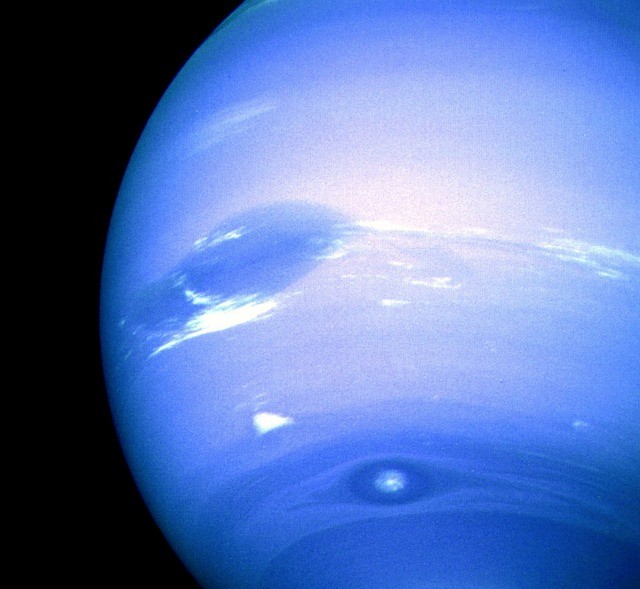
New research released by NASA reported odd movements in Neptune's two innermost moons, even by the extreme standards of space. Scientists have dubbed the cosmic choreography of tiny satellites Naiad and Thalassa a "dance of avoidance."
The pair orbit Neptune is only 1,150 miles (1,850 kilometers) apart. However, the moons miraculously always manage to miss each other as Naiad takes seven hours to circle Neptune, while Thalassa takes seven and a half on the outside track.
Every time it passes the slower-moving Thalassa, the two are about 2,200 miles (3,540 kilometers) apart. Compared with Thalassa, Naiad's orbit is tilted by about five degrees - it spends half of its time above Thalassa and half of it below, in a linked realm that's unlike anything else on the record.
Marina Brozovic, a physicist from NASA Jet Propulsion Laboratory, said they refer to the repeating pattern as resonance. She explained there are many various types of dances that planets, moons, and asteroids can follow. However, they have never seen such a phenomenon before.
The team applied the information collected between 1981 and 2016 from telescopes on Earth, Voyager 2, and the Hubble Space Telescope to know how Naiad and Thalassa are going around where they are residing in the planet.
Naiad and Thalassa are tiny-shaped like Tic Tacs, traversing only about 60 miles (100 kilometers) in length. They are two of Neptune's seven inner moons, part of a tightly packed system interwoven with faint rings.
Why are the moons acting oddly?
The capture of the great Neptune moon Triton might explain where Naiad and Thalassa originated from and how they came to be spinning around the planet in such an odd way, according to the researchers.
Researchers suggested that the inner moons might represent Triton's leftovers with Naiad eventually propelled into its tilted orbit through communicating with another of these nearby neighbors.
The study had also been able to take the first steps toward determining the composition of Neptune's inner moons, which seem to be built up of something comparable to water ice.
Mark Showalter, a planetary astronomer from SETI Institute, expressed his excitement in finding the co-dependencies between moons."
"Naiad and Thalassa have seemingly been locked together in this configuration for a very long time as [their movement] makes their orbits more stable. They maintain [peace and harmony] by never getting too close," he explained.
The research has been published in Icarus.
How does the moon in other planets look like?
The giant planets of the outer solar system far from the pull of the Sun are the dominant sources of gravity. The big worlds boast dozens of moons.
Some of the moons developed with their planets and never went anywhere; others were gained later, then locked into orbits dictated by their planets. Some orbit in the opposite direction their planets rotate; others swap orbits with each other to avoid a collision.
Neptune has 14 confirmed moons. Neso, the farthest-flung of them, orbits in a wildly elliptical loop that carries it nearly 46 million miles (74 million kilometers) away from the planet and takes 27 years to complete.
© 2025 NatureWorldNews.com All rights reserved. Do not reproduce without permission.





